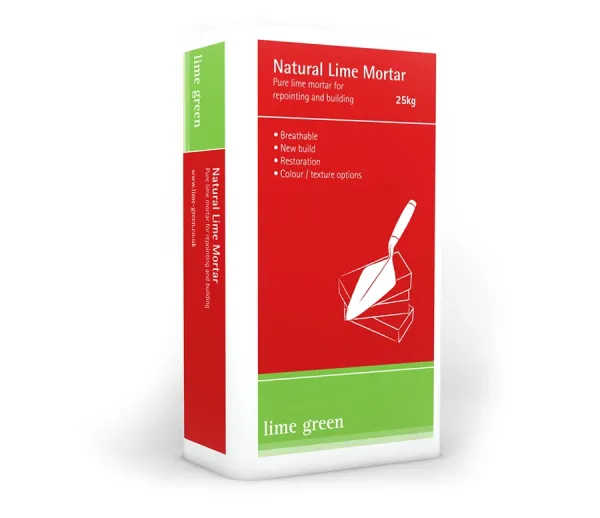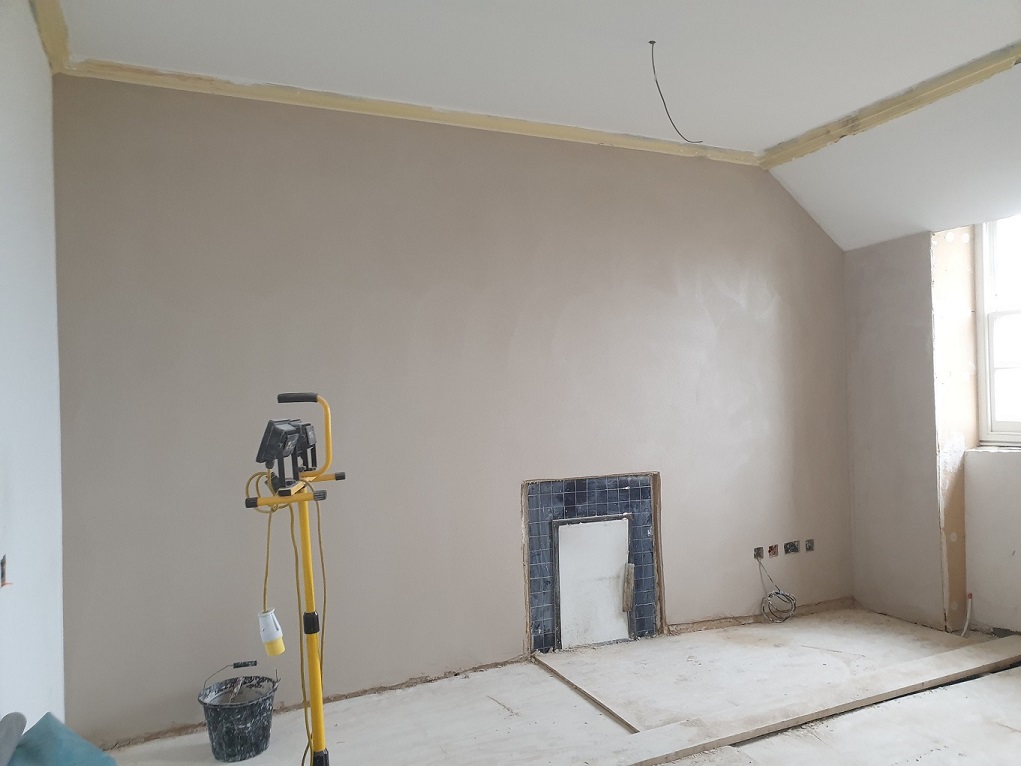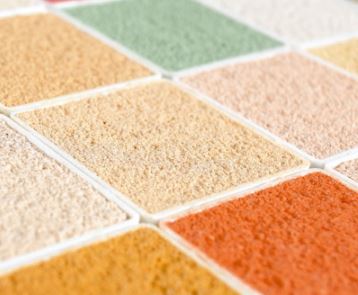Knowledge base
Why Lime?
It is a common misconception that lime as a building material is somehow 'out of date', and that modern materials have superseded it.
That couldn't be further from the truth, and there are very strong arguments to suggest that in many circumstances lime should be the first choice option - even in the 21st Century.
So, if you haven't been 'thinking lime' for building, here are 18 good reasons why you should:
1. Lime is vapour permeable
In other words air can pass through it in a way that doesn't happen with a denser material like cement, or polymer-based renders and plasters. This allows buildings to breathe, so that when moisture forms it can escape. And that's important because moisture - effectively water - is the enemy of natural materials like stone, timber and iron. Lime building materials should be the first choice option when looking to ensure a building retains its structural integrity and stays healthy & protected for many years to come.
2. Lime is good at absorbing and releasing moisture
This means it can act as natural humidity control, taking out moisture from the air when there's too much, and releasing it back when the air gets too dry, all of which makes for more pleasant living conditions.
3. Lime prevents condensation
Because moisture isn't accumulating in rooms, when you use lime for building you won't get condensation on the surface of walls that can lead to the growth of mould, something that's not only unsightly, but can lead to release of spores which are unhealthy to breathe in - important if you or members of your family suffer from conditions like asthma.
4. Lime provides strength and long-lasting adhesion
Since one of the properties of lime is that it is made of very fine particles, much smaller than those that make up cement, it's very 'sticky'. This means it penetrates into the tiny spaces on the surface of other materials, allowing it to bind to them extraordinarily well for long lasting adhesion.
5. Lime is safer for adjacent materials
Lime does no physical damage to adjacent materials, something that can happen when overly strong cement-based mortar mixes are used.
6. Lime is flexible
As lime is a 'flexible' building material that gives a little when a building moves, it's far more 'forgiving' than denser cement materials which may crack or deform even with just a little ground movement or swell.
7. Lime lasts
For evidence of the enduring properties of lime look no further than Rome's Pantheon Temple whose concrete dome not only spans an impressive 43 metres but was built nearly 2,000 years ago. Nearer home, Caesar's Tower at Warwick Castle is a mere lime-built youngster at over 600 years.
8. Lime is environmentally friendly
It not only absorbs potentially damaging carbon dioxide from the atmosphere, but the amount of energy required to produce it in the first place- the embodied energy - is less than is required for the production of cement. And as it can be produced on a small scale, there is less impact on the local area.
9. Lime binds well
Because lime binds well with many things, recycled material such as glass can be easily incorporated into it, just as we've done with our Ultra range of insulating lime plasters and lime renders, which contain recycled glass beads.
10. Lime is good to work with
Despite an ill-deserved reputation among some, lime is a great material to work with. Lime mortars and lime plasters stay smooth and malleable, even against the suction from porous brick and block. This 'workability' helps greatly in ensuring that joints are full and bonds are good, essential for good workmanship. What's more, this workability also means that variously graded aggregate can be added to the lime mix to further improve performance and create different looks.
11. Lime has disinfectant qualities
Because it's caustic, lime has disinfectant qualities, especially when it's used as limewash, but the same is also true for lime mortars, lime plasters and lime renders. This means it will resist the build up of moulds that can lead to breathing difficulties, creating a healthier living environment, and making lime an ideal materiel for building.
12. Lime is autogenous
This means it can heal itself. While movements in 'stiff' cement-bound buildings tend to result in cracks, the same movement in buildings where lime is used produces many fine cracks. When water penetrates these, it dissolves any 'free' lime it encounters, depositing it there as it evaporates. In this way, lime seals and heals.
13. Lime gets stronger over time
Lime surfaces and materials can actually become stronger over time through the formation of calcite crystals that form in lime-rich environments, something that doesn't happen with cements.
14. Lime blends into the environment
Lime is perfect for creating an unobtrusive finish that blends naturally into a locality in a way that is difficult with more contemporary products. That can be important when you are trying to meet local planning requirements, or to create a look sympathetic to a local identity.
15. Lime provides a beautiful, natural finish
Lime as a surface finish is aesthetically pleasing, with a more 'natural' look that comes from the double refraction of light through the calcite crystals that are present in it. This creates a softer texture than you get with 'harder' cement-based products, which can complement the appearance of either contemporary or traditional buildings. With lime, you also get a visually unique finish each time with the surface quickly developing a distinctive 'patina' that has a translucent glow, something that's seen for instance on the beautiful buildings in Venice.
16. We provide training
Lime building materials are suitable and practical for all sizes of projects and developments too, which is why we provide training and assistance where required.
17. Lime has many uses
It can also be incorporated into effective building systems, such as our own Warmshell system, where a lime render is used to add surface finish and an additional insulative layer to the structural insulation panels beneath.
18. Lime is safe for the environment
As lime is a natural material, it doesn't 'leach' damaging chemicals, so unlike many more synthetic products it can be used near water courses without risk of harm to wildlife or habitat.
So, if you weren't already thinking about using lime building materials for your next project, hopefully we've convinced you that the properties of lime make it an ideal material for building.
To find out more about any of our products or build systems, and how you can use them effectively, call us on 01952 728611 or email us and we'll be happy to answer your questions.


